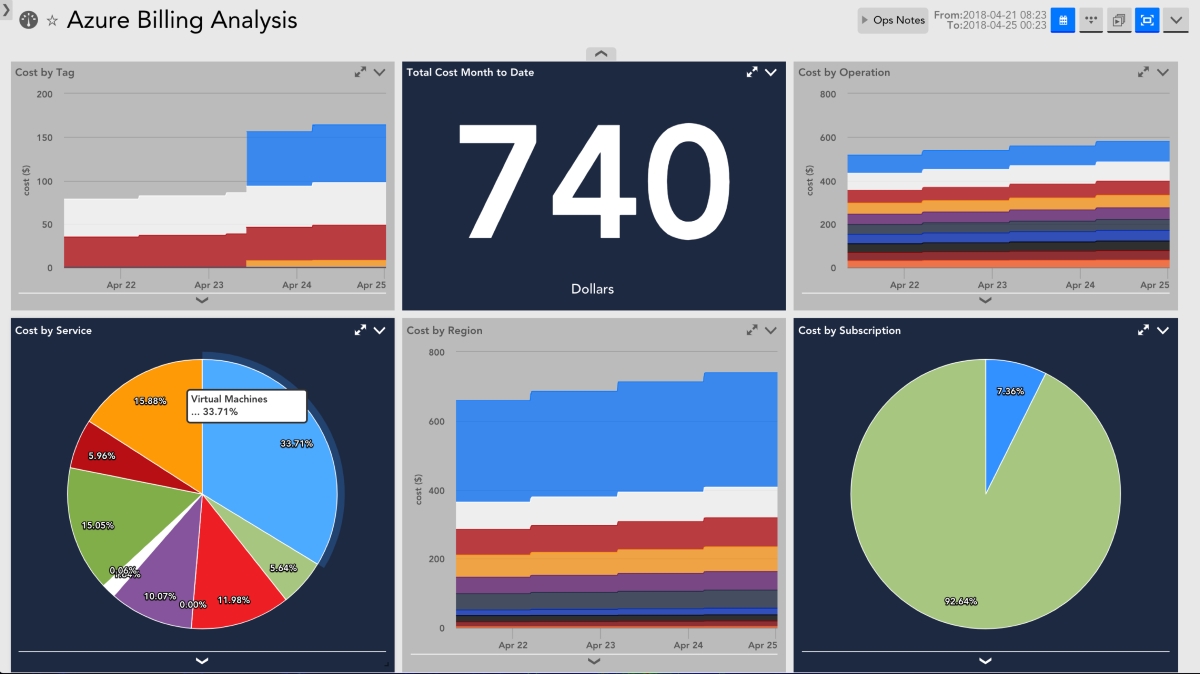

Finance
How To Find Stocks That Will Explode
Published: January 17, 2024
Learn how to find explosive stocks in the finance industry with our comprehensive guide. Increase your investment opportunities and maximize your returns.
(Many of the links in this article redirect to a specific reviewed product. Your purchase of these products through affiliate links helps to generate commission for LiveWell, at no extra cost. Learn more)
Table of Contents
Introduction
Investing in the stock market can be an exciting and potentially lucrative venture. However, with thousands of stocks to choose from, finding the ones that have the potential to explode in value can seem like trying to find a needle in a haystack. But fear not, because in this article, we’ll provide you with some valuable insights and tips on how to identify stocks that have the potential to skyrocket.
Before we dive into the details, it’s important to clarify what we mean by “explosive stocks.” These are stocks that have the potential for significant price appreciation in a relatively short period. They are often characterized by high growth rates, strong market trends, and positive catalysts that can drive their value higher.
Investing in explosive stocks can be a high-risk, high-reward strategy. While some stocks may indeed explode, others may fizzle out or even experience a significant decline in value. Therefore, it’s crucial to conduct thorough research and have a solid risk management strategy in place to protect your investment.
Throughout this article, we will explore various methods and indicators to help you identify potential explosive stocks. We’ll delve into both fundamental and technical analysis, as well as the importance of growth potential and market trends. We’ll also discuss how to identify catalysts that can propel a stock’s price upward. Lastly, we’ll provide you with some helpful resources and tools to assist you in your stock research.
It’s important to remember that investing in the stock market is not a guaranteed way to make money. It involves risks, and there are no foolproof strategies. The information provided in this article is intended to be educational and should not be considered financial advice. We encourage you to consult with a qualified financial advisor before making any investment decisions.
With that in mind, let’s now explore the different factors to consider when searching for explosive stocks.
What to Look for in Explosive Stocks
When searching for explosive stocks, it’s essential to consider various factors that can contribute to their potential for significant price appreciation. Understanding these factors can help you identify stocks with a higher likelihood of explosive growth. Here are some key things to look for:
- Growth Potential: One of the most critical factors to consider when searching for explosive stocks is their growth potential. Look for companies that operate in industries with a promising future or have unique products or services that set them apart from the competition. Companies that can demonstrate a history of strong revenue and earnings growth are also worth considering.
- Market Trends: Pay attention to market trends and identify industries that are experiencing significant growth. Investing in stocks that are part of a thriving sector can increase the chances of explosive gains. For example, technology companies experiencing advancements in artificial intelligence or renewable energy companies benefiting from an increased focus on sustainability may present exciting opportunities.
- Financial Health: Assessing a company’s financial health is crucial when evaluating explosive stock potential. Look for companies with a solid balance sheet, a manageable level of debt, and sufficient cash flow to fund their operations and growth initiatives. Analyze key financial ratios such as earnings per share (EPS), return on equity (ROE), and profit margins to gauge the company’s profitability and efficiency.
- Competitive Advantage: Identify companies with a sustainable competitive advantage. This could be in the form of a unique product or service, strong brand recognition, or proprietary technology. A competitive advantage can help a company maintain its market position and drive growth even in a competitive landscape.
- Catalysts: Look for catalysts that could potentially drive a stock’s price higher. These can include favorable industry or macroeconomic trends, new product launches, strategic partnerships, or positive regulatory developments. Identifying catalysts can help you anticipate potential price movements and take advantage of their impact.
Keep in mind that investing in explosive stocks involves risks, and there are no guarantees of success. It’s important to conduct thorough research, stay updated on market trends, and diversify your portfolio to minimize risk. Additionally, consider setting realistic profit targets and implementing stop-loss orders to protect your investment in case the stock’s performance doesn’t meet your expectations.
Now that we’ve covered what to look for in explosive stocks, let’s move on to explore the different analysis techniques that can help you in your search.
Fundamental Analysis
Fundamental analysis is a key part of evaluating the potential of explosive stocks. It involves examining a company’s financials, management team, competitive position, and industry outlook to determine its intrinsic value. Here are some important factors to consider in fundamental analysis:
- Revenue and Earnings Growth: Analyzing a company’s historical revenue and earnings growth can give you insight into its past performance and potential for future growth. Look for consistent growth trends and positive momentum in these key financial metrics.
- Profitability Ratios: Evaluate profitability ratios such as gross profit margin, operating profit margin, and net profit margin. These ratios indicate how efficiently a company converts its revenue into profits. Higher profit margins indicate better financial health and the potential for explosive growth.
- Balance Sheet Strength: Assess a company’s balance sheet to determine its financial health. Look for strong liquidity ratios, such as the current ratio and quick ratio, which measure the company’s ability to meet its short-term obligations. Additionally, analyze the company’s debt levels and debt-to-equity ratio to ensure they are manageable.
- Management Team: Evaluate the management team’s experience and track record. Look for strong leadership and a management team that has a proven ability to drive growth and make strategic decisions. Additionally, assess their communication with shareholders and their transparency in reporting financial information.
- Industry Analysis: Examine the industry in which the company operates. Understand the market dynamics and competitive landscape. Look for industries with high growth potential and companies that have a competitive advantage within their industry. A company in a thriving industry is more likely to experience explosive growth.
While fundamental analysis is crucial, it’s important to note that it should not be the sole basis for investment decisions. It’s always recommended to combine fundamental analysis with other forms of analysis, such as technical analysis, to get a more comprehensive view of a stock’s potential.
Now that we’ve explored fundamental analysis, let’s move on to discuss the importance of technical analysis in identifying explosive stocks.
Technical Analysis
Technical analysis is another important tool in identifying explosive stocks. It involves studying past price and volume data to predict future price movements. Here are some key concepts and indicators used in technical analysis:
- Price Patterns: Technical analysts look for specific patterns on stock price charts that can indicate potential price movements. Common patterns include the head and shoulders, double tops, and ascending triangles. These patterns can signal a potential reversal or continuation of a trend.
- Trend Analysis: Analyzing stock price trends can help identify the direction in which a stock is moving. Technical analysts use trend lines and moving averages to identify upward, downward, or sideways trends. Stocks that are in well-defined uptrends have a higher potential for explosive growth.
- Volume Analysis: Volume refers to the number of shares traded during a given period. Technical analysts use volume analysis to assess the strength of price movements. Higher volume during price increases suggests increased buying pressure, indicating potential upward momentum and explosive growth opportunities.
- Support and Resistance Levels: Support and resistance levels are price levels that a stock tends to encounter buying or selling pressure, respectively. Technical analysts look for these levels as they can indicate potential entry or exit points. Stocks breaking through resistance levels may experience explosive upward moves.
- Technical Indicators: There are numerous technical indicators available to help identify potential trends and reversals. Some commonly used indicators include moving averages, relative strength index (RSI), stochastic oscillators, and MACD (moving average convergence divergence). These indicators can provide insights into a stock’s momentum and overbought or oversold conditions.
It’s important to note that technical analysis alone should not be relied upon for investment decisions. Combining it with fundamental analysis and understanding the broader market trends can provide a more comprehensive view of a stock’s potential for explosive growth.
Now that we’ve explored technical analysis, let’s move on to discussing the significance of growth potential in identifying explosive stocks.
Growth Potential
Growth potential is a crucial element to consider when identifying explosive stocks. Stocks with high growth potential have the capacity to deliver significant returns to investors over time. Here are some factors to evaluate when assessing a stock’s growth potential:
- Industry Expansion: Look for companies operating in industries that are expected to experience substantial growth in the coming years. Industries such as technology, renewable energy, healthcare, and e-commerce have shown remarkable growth potential. Investing in companies within these industries can position you to benefit from their expansion.
- Market Share: Assess a company’s ability to gain or maintain market share within its industry. Companies with a growing market share often have a competitive advantage and can generate higher revenues and profits. Pay attention to companies that are taking market share from competitors or have sustainable market dominance.
- Innovation and Product Pipeline: Companies that consistently innovate and have a robust product pipeline are more likely to experience growth. Look for companies that invest in research and development and have a track record of successful product launches. A strong product pipeline indicates the potential for ongoing revenue growth.
- International Expansion: Evaluate a company’s growth potential through international expansion. Companies that successfully enter new markets or expand their global presence can unlock significant growth opportunities. Consider companies that have a solid strategy in place for penetrating international markets.
- Financial Projections: Analyze a company’s financial projections and growth forecasts. Look for companies that have a history of meeting or exceeding their projected growth rates. Assess the company’s ability to execute its growth strategies and assess the credibility of the projections provided.
When evaluating growth potential, it’s essential to remember that not all growth is created equal. Sustainable and profitable growth is more desirable than short-term, unsustainable growth. Look for companies that have a solid track record of balancing growth with profitability and a clear strategy for continued growth in the future.
Now that we’ve discussed growth potential, let’s move on to examining the importance of market trends in identifying explosive stocks.
Market Trends
Market trends play a significant role in identifying explosive stocks. Understanding the broader market trends can help investors capitalize on opportunities and make informed investment decisions. Here are some key aspects to consider when evaluating market trends:
- Sector Performance: Monitor the performance of different sectors within the stock market. Some sectors tend to outperform during specific economic cycles or periods of technological advancements. By identifying sectors with strong growth potential, you can focus your search for explosive stocks within those sectors.
- Macro-Economic Factors: Keep an eye on macro-economic factors that can impact the overall market. Factors such as interest rates, inflation, GDP growth, and geopolitical events can have a significant influence on stock prices. Identify trends and patterns in these factors to gauge the potential impact on specific stocks or industries.
- Consumer and Demographic Shifts: Stay informed about changing consumer preferences and demographic shifts. As consumer needs and behaviors evolve, certain industries and companies may experience explosive growth. For example, the rise of e-commerce due to increased online shopping trends has created significant opportunities for companies in that sector.
- Technological Advancements: Assess the impact of technological advancements on various industries. Disruptive technologies have the potential to revolutionize industries and create explosive growth opportunities. Look for companies that are at the forefront of technological innovation and can benefit from these advancements.
- Social and Environmental Factors: Consider social and environmental trends that can drive market shifts. Issues such as sustainability, corporate social responsibility, and ethical investing have gained traction in recent years. Companies that align with these trends and meet the changing preferences of conscious consumers may experience significant growth.
By staying attuned to market trends, you can anticipate shifts in investor sentiment and identify industries or companies that are primed for explosive growth. It’s important to note that market trends can change rapidly, so it’s essential to continuously monitor and adapt your investment strategy accordingly.
Now that we’ve explored the significance of market trends, let’s move on to discussing the importance of identifying catalysts in identifying explosive stocks.
Identifying Catalysts
Identifying catalysts is crucial for identifying explosive stocks as they can trigger significant price movements. Catalysts are events or factors that can propel a stock’s price upward. Here are some common catalysts to consider:
- Earnings Reports: Positive earnings reports that exceed market expectations can serve as catalysts for a stock. Strong revenue growth, improved profitability, or positive guidance can attract investors and drive the stock price higher.
- Product Launches: The successful launch of a new product or service can act as a catalyst for a company’s stock. If a company introduces a groundbreaking product or enters a new market with strong potential, investors may perceive it as a positive signal for future growth.
- Partnerships and Collaborations: Strategic partnerships or collaborations with prominent companies or industry leaders can boost investor confidence and drive a stock’s price higher. Such partnerships can open new growth opportunities and enhance a company’s competitive position.
- Regulatory Developments: Positive regulatory developments, such as favorable changes in laws or regulations that benefit a specific industry or company, can act as catalysts. Conversely, negative regulatory developments can have the opposite effect. Stay informed about regulatory changes and their potential impact on stocks.
- Industry Trends and News: Industry trends and news can serve as catalysts for specific stocks. Positive industry trends, breakthrough innovations, or news related to mergers and acquisitions can attract investor attention and drive stock prices upward.
- Market Sentiment: Changes in overall market sentiment can also act as catalysts for stocks. Favorable economic news or a shift in investor sentiment towards a particular sector or industry can drive stock prices higher.
To identify potential catalysts, it’s essential to stay updated with the latest news, industry trends, and company announcements. Follow reputable financial news sources, monitor company press releases, and utilize stock screeners or real-time financial platforms to track relevant information.
It’s important to note that catalysts can be both positive and negative. While positive catalysts can drive stock prices higher, negative catalysts can lead to significant declines. Consider the potential impact of both types of catalysts when evaluating the potential for explosive stock growth.
Now that we’ve discussed the importance of identifying catalysts, let’s move on to exploring risk management strategies to protect your investment.
Risk Management Strategies
Having a robust risk management strategy in place is essential when investing in explosive stocks. While the potential for significant gains is enticing, it’s crucial to protect your investment from potential losses. Here are some risk management strategies to consider:
- Diversification: Diversify your portfolio by investing in a variety of stocks across different sectors and industries. This helps spread the risk and reduces the impact of any single stock’s performance on your overall portfolio. Consider allocating your investments among different asset classes, such as stocks, bonds, and other investment vehicles.
- Stop-Loss Orders: Implement stop-loss orders to automatically sell a stock if it drops to a predefined price. This strategy helps limit potential losses by allowing you to exit a position before it declines further. Determine an appropriate stop-loss level based on your risk tolerance and the stock’s volatility.
- Position Sizing: Carefully consider the size of your positions in explosive stocks. Avoid investing a disproportionately large portion of your portfolio in a single stock, as this amplifies the potential risk. Determine a reasonable percentage of your portfolio to allocate to each stock based on your risk tolerance.
- Stay Informed: Continuously stay informed about the latest news, developments, and financial health of the stocks in your portfolio. Regularly review company earnings reports, news releases, and industry trends. This helps you make informed decisions and take necessary actions to mitigate potential risks.
- Set Realistic Expectations: It’s essential to set realistic expectations when investing in explosive stocks. Understand that not all stocks will explode in value, and there can be periods of volatility or even declines. Avoid chasing overly hyped stocks without proper research and analysis. Manage your expectations and be prepared for potential fluctuations in stock prices.
Risk management should be an ongoing process. Regularly reassess your portfolio, review your risk tolerance, and adjust your positions as needed. It’s also important to regularly review and update your risk management strategy based on changing market conditions and your financial goals.
Remember, investing in explosive stocks involves risks, and there are no guarantees of success. It’s important to be diligent, conduct thorough research, and consult with a qualified financial advisor before making any investment decisions. By implementing sound risk management strategies, you can protect your investment while taking advantage of the potential for explosive growth.
Now that we’ve explored risk management strategies, let’s move on to discussing some research tools and resources that can assist you in identifying explosive stocks.
Research Tools and Resources
When it comes to identifying explosive stocks, utilizing the right research tools and resources can significantly enhance your analysis and decision-making process. Here are some essential tools and resources to consider:
- Financial Websites: Websites such as Yahoo Finance, Bloomberg, and CNBC provide a wealth of information and data on stocks. From financial statements and market news to analyst ratings and historical stock prices, these websites offer valuable insights to aid your research.
- Stock Screeners: Stock screeners allow you to filter and narrow down stocks based on specific criteria that are important to you. You can screen for factors such as market capitalization, P/E ratio, revenue growth rate, and more. Platforms like Finviz and TradingView offer powerful stock screening tools.
- Company Filings: Publicly-traded companies are required to file their financial statements and other important information with regulatory bodies such as the Securities and Exchange Commission (SEC) in the United States. Platforms like the SEC’s EDGAR database allow you to access and analyze these filings, including annual reports, quarterly reports, and more.
- Financial Newsletters and Blogs: Subscribe to reputable financial newsletters and follow industry-specific blogs. These sources often provide expert analysis, insights, and stock recommendations that can supplement your research. However, exercise caution and ensure you only rely on trusted sources.
- Analyst Reports: Research reports from professional analysts can offer valuable insights into specific stocks. Many brokerage firms publish research reports that include detailed analysis, target prices, and investment recommendations. Keep in mind that it’s crucial to consider multiple sources and form your own opinion.
- Social Media and Investment Communities: Social media platforms like Twitter and investment communities like Reddit can provide a wealth of information and discussion about stocks. Engaging with these communities can offer different perspectives and help you stay attuned to market sentiment. However, exercise caution and verify information from reliable sources.
Remember, the effectiveness of these tools and resources depends on how you utilize them and the quality of the information you gather. It’s important to conduct thorough research, cross-validate information from multiple sources, and exercise critical thinking when making investment decisions.
Now that we’ve discussed research tools and resources, let’s conclude the article.
Conclusion
Identifying explosive stocks can be a thrilling endeavor, but it requires careful analysis, research, and the use of appropriate tools and resources. By considering factors such as growth potential, market trends, fundamental and technical analysis, catalysts, and risk management strategies, you can increase your chances of finding stocks with the potential to skyrocket.
Remember that investing in explosive stocks comes with inherent risks, and there are no guarantees of success. It’s essential to conduct thorough research, stay informed about market trends, and utilize various analysis techniques to make informed decisions. Diversification, setting realistic expectations, and implementing risk management strategies are crucial to protect your investment.
Utilizing research tools and resources such as financial websites, stock screeners, company filings, analyst reports, and social media platforms can provide valuable insights and supplement your analysis. However, it’s important to critically evaluate the information gathered and cross-validate from multiple sources.
Lastly, always consult with a qualified financial advisor before making any investment decisions. They can provide personalized guidance based on your individual financial goals, risk tolerance, and investment horizon.
Investing in explosive stocks can be a rewarding venture, but it requires a blend of research, analysis, and prudent risk management. With diligence and careful consideration, you can uncover potential opportunities for significant price appreciation and potentially achieve your investment goals.














